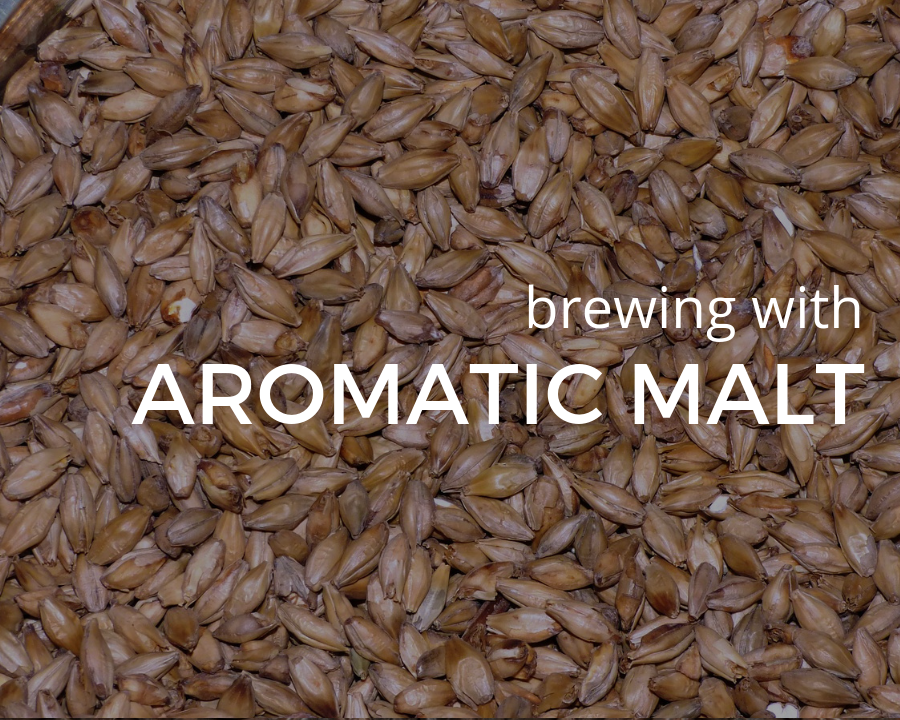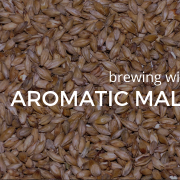Brewing With Aromatic Malt

Most maltsters produce an aromatic malt in their lineup of products. It is a highly kilned malt whose name conjures up a sense of what this malt could bring to a beer. What aromatic malt does bring to a beer is a bold maltiness that is slightly stronger than malts like M
Table of Contents
A Bit Bolder Than Base Malts
Aromatic malts are made by lightly toasting pale malt at temperatures just over 105C / 220F. This toasting brings flavour and aroma that produces a pronounced malt flavour. Depending on the amount used the flavour of aromatic malt can range from honey to raisin like dried fruit.
Aromatic malt will need mashing and depending on the maltster will have some diastatic power so will be able to convert its own starches in the mash. Be sure to read the malt specifications as if there is diastatic power larger proportions can be used in the mash, up to 50% in some cases.
Aromatic Malt Colour
Aromatic malt is highly kilned so is darker than a typical base malt. In comparison to Munich
Used in small percentages in lagers or Bocks will provide a subtle honey colour and in larger amounts it is best used in darker beers.
Maillard Reactions Boost Flavour
The high temperatures in the kiln promote
These maillard reactions are what give the malt a more intense malt aroma. The flavour also gives the impression of a fuller body to the beer.
Typical Beer Styles To Use Aromatic Malt In
As for the beer styles that are suited to aromatic malt you want to think about where you would use other kilned malts such as Munich, Vienna or these types of variations. Typical beers where you want to boost body and have a nice, crisp malt backbone.
Belgian style beers, Oktoberfests, Bocks are examples that use a small percentage of 5 – 10% of aromatic malt to boost body and malt complexity.
Darker beer styles are also suitable for using higher proportions of aromatic malts: dark lagers, brown ales, English bitters, milds and even porters or stouts are suitable candidates that can cope with a more pronounced or fruit malt character that large percentages of aromatic malt can bring.
Typical Usage Amounts
When deciding on on much aromatic malt to use you will want to check maltster specifications. As the intensity and amount of toasting can range from one maltster to another it makes sense to check. Keep this in mind when developing a recipe.
As an example, Simpsons Aromatic malt can be used in amounts of upto 50% of the grain bill for darker beers without a problem. Dingemans malt on the other hand has a more pronounced flavour and would be better used in smaller amounts upto 10%
In most cases you want to avoid overpowering a beer so consider what you are brewing. A paler beer would suit an addition of 2 – 3%.
A darker beer will cope better with additions upto 10% or more.



Leave a Reply
Want to join the discussion?Feel free to contribute!